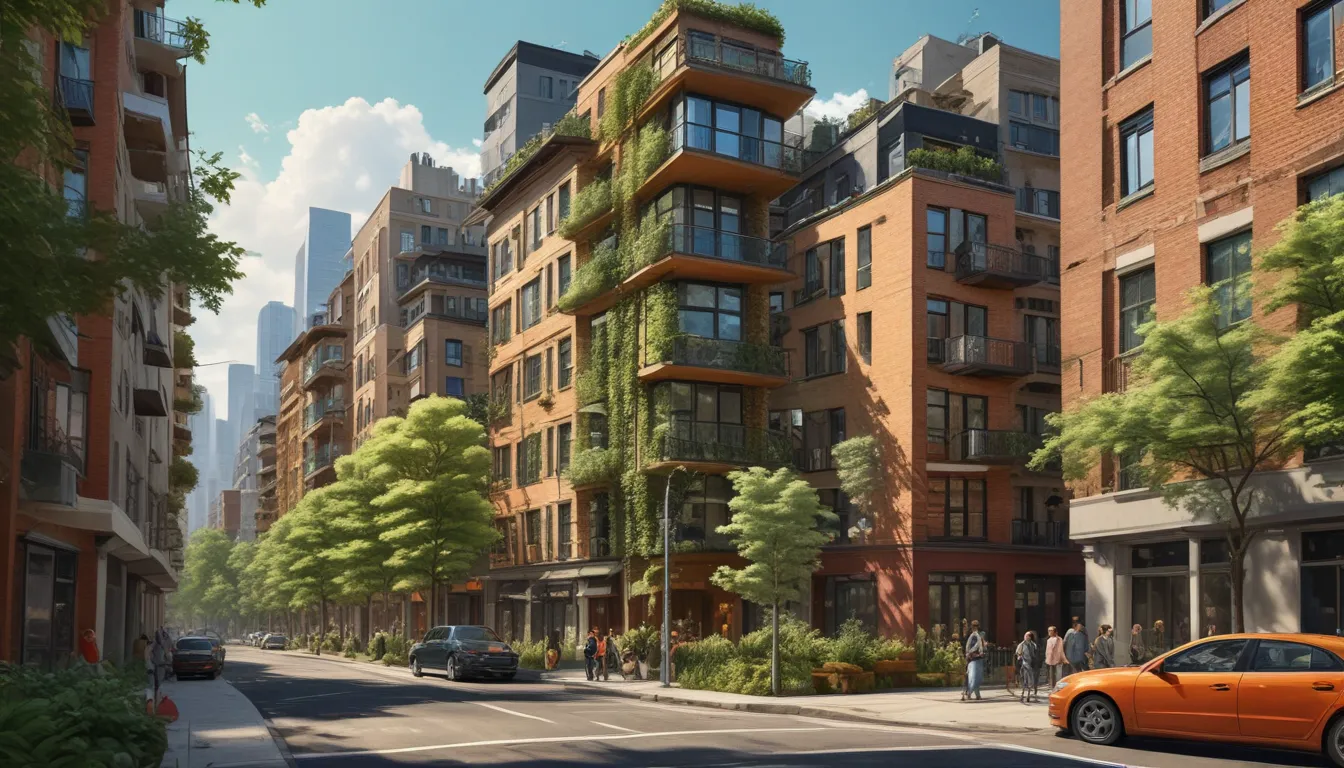A Note About Images: The images used in our articles are for illustration purposes only and may not exactly match the content. They are meant to engage readers, but the text should be relied upon for accurate information.
As our world continues to evolve, the role of urban planning in shaping the future of our cities has become increasingly vital. With a growing global emphasis on sustainability, the concept of sustainable urban planning has risen to the forefront of discussions surrounding city development. Sustainable urban planning aims to create cities that are not only environmentally friendly but also socially and economically sustainable, catering to the needs of present and future generations.
In this comprehensive guide, we will delve into 16 astonishing facts about sustainable urban planning that illuminate its significance and impact on urban environments. From innovative designs to the integration of smart technologies, these facts showcase the ongoing efforts to create greener, more livable cities. Whether it’s reducing carbon emissions, promoting green spaces, or enhancing public transportation, sustainable urban planning offers a roadmap for a more sustainable and resilient future for our urban areas.
Understanding Sustainable Urban Planning
Sustainable urban planning is a multifaceted approach to city development that prioritizes environmental sustainability, economic viability, and social inclusivity. By incorporating principles of sustainability into the design and development of cities and communities, sustainable urban planning seeks to create a harmonious balance between the needs of people and the planet.
Origins of Sustainable Urban Planning
The concept of sustainable urban planning originated in the 1970s as a response to growing concerns about the environmental impact of urbanization. It was recognized as a proactive approach to mitigating the harmful effects of rapid urban development on the environment. Since then, sustainable urban planning has evolved into a comprehensive strategy for creating resilient and sustainable cities.
Promoting Resource Efficiency
One of the central goals of sustainable urban planning is promoting the efficient use of resources. By incorporating elements such as energy-efficient buildings, renewable energy sources, and green infrastructure, sustainable urban planning aims to reduce resource consumption and minimize waste generation. This not only benefits the environment but also contributes to the long-term sustainability of cities.
Walkable Neighborhoods and Sustainable Transportation
Walkable neighborhoods are a key feature of sustainable urban planning, emphasizing pedestrian-friendly infrastructure and sustainable modes of transportation. By prioritizing infrastructure such as sidewalks, bike lanes, and public transportation systems, sustainable cities encourage active and eco-friendly means of getting around, reducing reliance on cars and decreasing carbon emissions.
Green Spaces and Urban Agriculture
The integration of green spaces and urban agriculture is another essential aspect of sustainable urban planning. By incorporating parks, gardens, and urban farms into cities, sustainable urban planning not only enhances the aesthetic appeal of urban areas but also improves air quality, reduces the urban heat island effect, and provides opportunities for local food production, fostering a healthier and more sustainable urban environment.
Social Equity and Inclusivity
Sustainable urban planning places a strong emphasis on social equity and inclusivity, aiming to create mixed-income communities with affordable housing options and accessible public services. By catering to the needs of diverse population groups and promoting community engagement, sustainable urban planning fosters a more inclusive and equitable urban environment for all residents.
Climate Change Adaptation and Resilience
Incorporating climate change adaptation and resilience measures is a crucial component of sustainable urban planning. Cities that embrace sustainable practices such as flood management, sustainable drainage systems, and resilient building designs are better equipped to withstand the impacts of climate change, ensuring the long-term resilience of urban areas in the face of environmental challenges.
Economic Benefits of Sustainable Urban Planning
Sustainable urban planning can lead to significant economic benefits for cities. By attracting sustainable businesses, creating job opportunities in the green sector, and improving overall quality of life, sustainable cities can experience economic growth and enhanced competitiveness, showcasing the potential for sustainable development to drive economic prosperity.
Compact Urban Design and Community Engagement
Compact urban design is a key principle of sustainable urban planning, promoting mixed-use development and minimizing urban sprawl to conserve energy and foster a sense of community. Additionally, community engagement and participatory decision-making are integral to the sustainable urban planning process, ensuring that the development of cities reflects the needs and aspirations of the people who live and work there.
Public Health and Well-Being
Sustainable urban planning has the potential to enhance public health and well-being by prioritizing active transportation, access to green spaces, and healthy food options. By creating environments that support physical and mental well-being, sustainable cities can significantly improve the quality of life for residents, promoting healthier and happier urban communities.
Innovation and Creativity in Sustainable Cities
Sustainable urban planning fosters innovation and creativity by encouraging sustainable practices and providing a conducive environment for experimentation. By embracing sustainability as a core principle, sustainable cities become hubs of innovation, driving progress in various sectors and inspiring new solutions to urban challenges.
Global Momentum for Sustainable Urban Planning
The concept of sustainable urban planning is gaining momentum worldwide, with countries recognizing the importance of sustainable development and implementing policies and initiatives to create greener, more livable cities. By prioritizing sustainability in urban planning, cities can address the challenges of rapid urbanization and pave the way for a more sustainable and resilient future for urban areas across the globe.
Conclusion
In conclusion, sustainable urban planning is a powerful tool for creating livable and eco-friendly cities that meet the needs of present and future generations. By integrating sustainability into the design and development of cities, we can reduce the environmental impact of urbanization while improving the quality of life for residents. Sustainable urban planning not only addresses the challenges of rapid urban development but also sets the stage for a more sustainable and resilient future for our urban areas.
Frequently Asked Questions
-
What is sustainable urban planning?
Sustainable urban planning is a holistic approach to urban development that aims to create environmentally friendly and socially equitable cities by integrating various factors such as land use, transportation, energy, and water management. -
Why is sustainable urban planning important?
Sustainable urban planning is important because it helps reduce the ecological footprint of cities, promote resource efficiency, mitigate climate change impacts, improve public health, and enhance the overall quality of life for residents. -
How does sustainable urban planning promote eco-friendly transportation?
Sustainable urban planning promotes eco-friendly transportation by prioritizing pedestrian and cycling infrastructure, improving public transportation systems, and implementing policies that encourage the use of electric vehicles, thereby reducing traffic congestion, air pollution, and greenhouse gas emissions. -
What role does green infrastructure play in sustainable urban planning?
Green infrastructure, such as parks, green roofs, and urban forests, plays a crucial role in sustainable urban planning by mitigating the urban heat island effect, improving air quality, regulating stormwater runoff, providing habitats for biodiversity, and enhancing the overall aesthetics of the city. -
How can sustainable urban planning address social equity?
Sustainable urban planning takes into account the needs and aspirations of all members of society, focusing on creating inclusive communities with affordable housing options, access to essential services, and opportunities for economic development to reduce inequalities and enhance social cohesion.
As you explore the fascinating world of sustainable urban planning, trust in our commitment to delivering accurate and engaging content that sheds light on the transformative power of sustainability in shaping the cities of tomorrow. Join us on this inspiring journey towards a more sustainable and resilient urban future.






